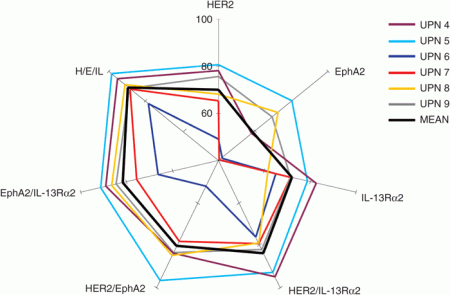In cancer patients undergoing adoptive T cell therapy, T cells that recognise and react to an abundant protein fragment expressed by a tumour cell are infused into the bloodstream. These protein fragments are known as tumour-associated antigens.
Because cancers are so genetically flexible, when T cells start to attack a single one of these tumour-associated antigen targets, the tumour cells can quickly evolve a new way to grow that bypasses the need for this protein.
Now, mathematical models developed by researchers at Baylor College of Medicine in the USA predict that targeting two tumour antigens will improve T cell therapeutic reach and prevent tumour escape. Interestingly, though, these same models predict that targeting three will have no extra benefit.

In the image above, the prevalence of seven common tumour associated antigens in the brain cancer, glioblastoma multiforme, can be seen across six different cancer specimens (UPN4-9).
Repost from the Stojdl Lab blog.




